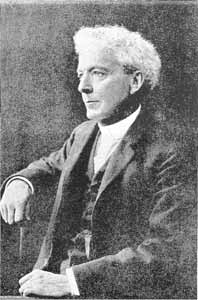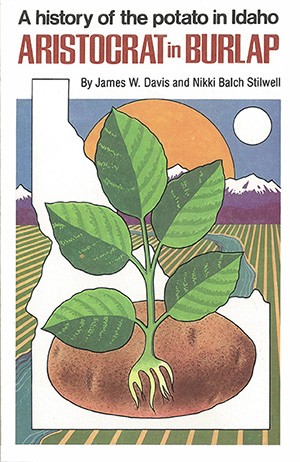 Luther Burbank, the developer of the famous Idaho potato.
Luther Burbank, the developer of the famous Idaho potato.
Nearly all of the potatoes grown within the borders of the state of Idaho are one variety, the Russet Burbank. Although potato breeders have been working for more than 40 years in the state in an attempt to improve the Russet Burbank variety, to date, no variety has been introduced that has proven a serious contender to this traditionally famous Idaho baker.
It is fortunate that scientists are in the habit of keeping journals and records of their experiments and work because it is from Luther Burbank's journal that we find the following account of the origin of the Burbank potato.
In 1872, Luther Burbank found a single fruit (seed ball) growing in his New England garden planting of the potato variety Early Rose. Because Early Rose did not commonly set fruits, he watched this fruit throughout the season with an eye to harvesting it when mature. Unfortunately, the fruit disappeared from the parent stem. Burbank decided that it would not have been attractive as food to bird or animal and started to look for it. He said, "So, day after day, I returned and took up the search again and at last, this patient search was rewarded. The missing seed ball was found."
Luther Burbank found only 23 seeds in the fruit. When the spring of 1872 came, he planted the 23 seeds in the garden "as one would plant the seeds of beets or cabbage. The ground had been prepared with great care and each seed was placed about a foot from its neighbor in the row, but no special protection was given the seeds."
All 23 seeds grew and produced tubers. Two seedlings appeared better than the Early Rose parent, and one of the two was distinctly better in yield and size of tubers. This better seedling proved itself in the summer of 1874. Burbank felt that this new seedling, which would produce two or three times as much as ordinary varieties, should be introduced to the public.
He said that the first dealer to whom he offered the new potato "declined it rather curtly." Burbank finally mustered up enough courage to try again. To bring the potato to the attention of J. H. Gregory of Marblehead, Massachusetts, he sent him a sample by way of introduction. Burbank wanted $500 for the potato, but Gregory would pay only $150. Luther Burbank used the money to move to California. He took with him ten tubers that Gregory allowed him to keep. Gregory named the variety Burbank Seedling (which subsequently became simply Burbank).


 Luther Burbank, the developer of the famous Idaho potato.
Luther Burbank, the developer of the famous Idaho potato.